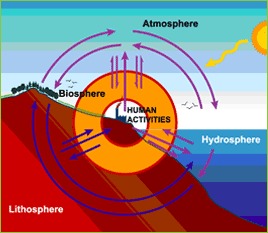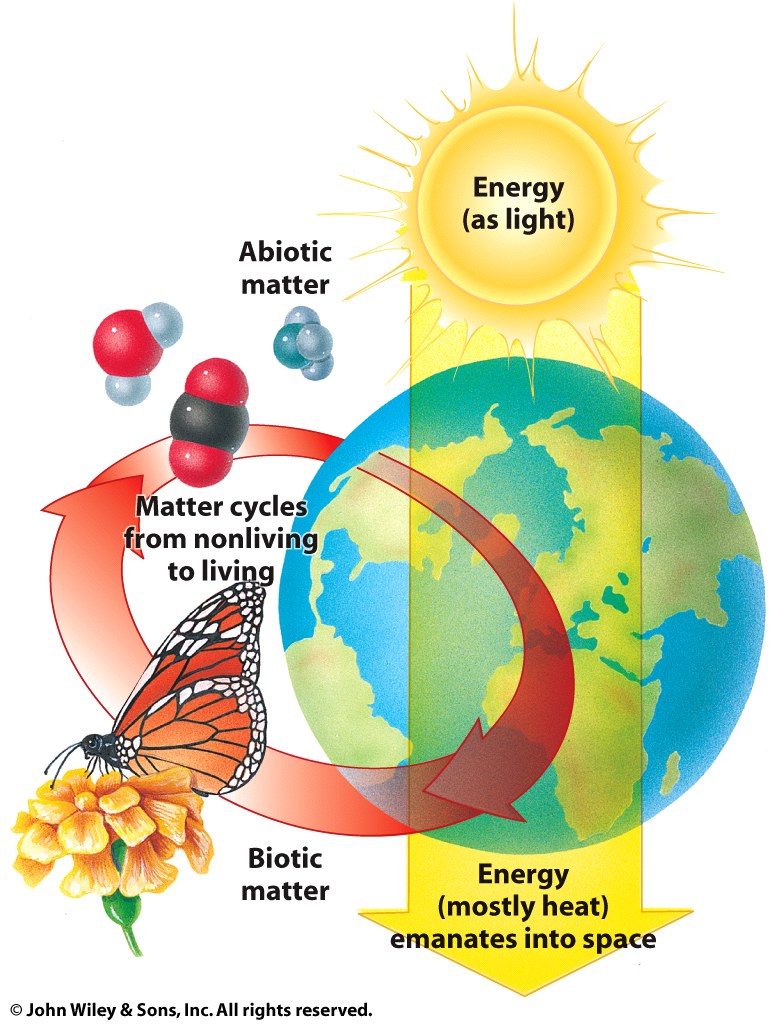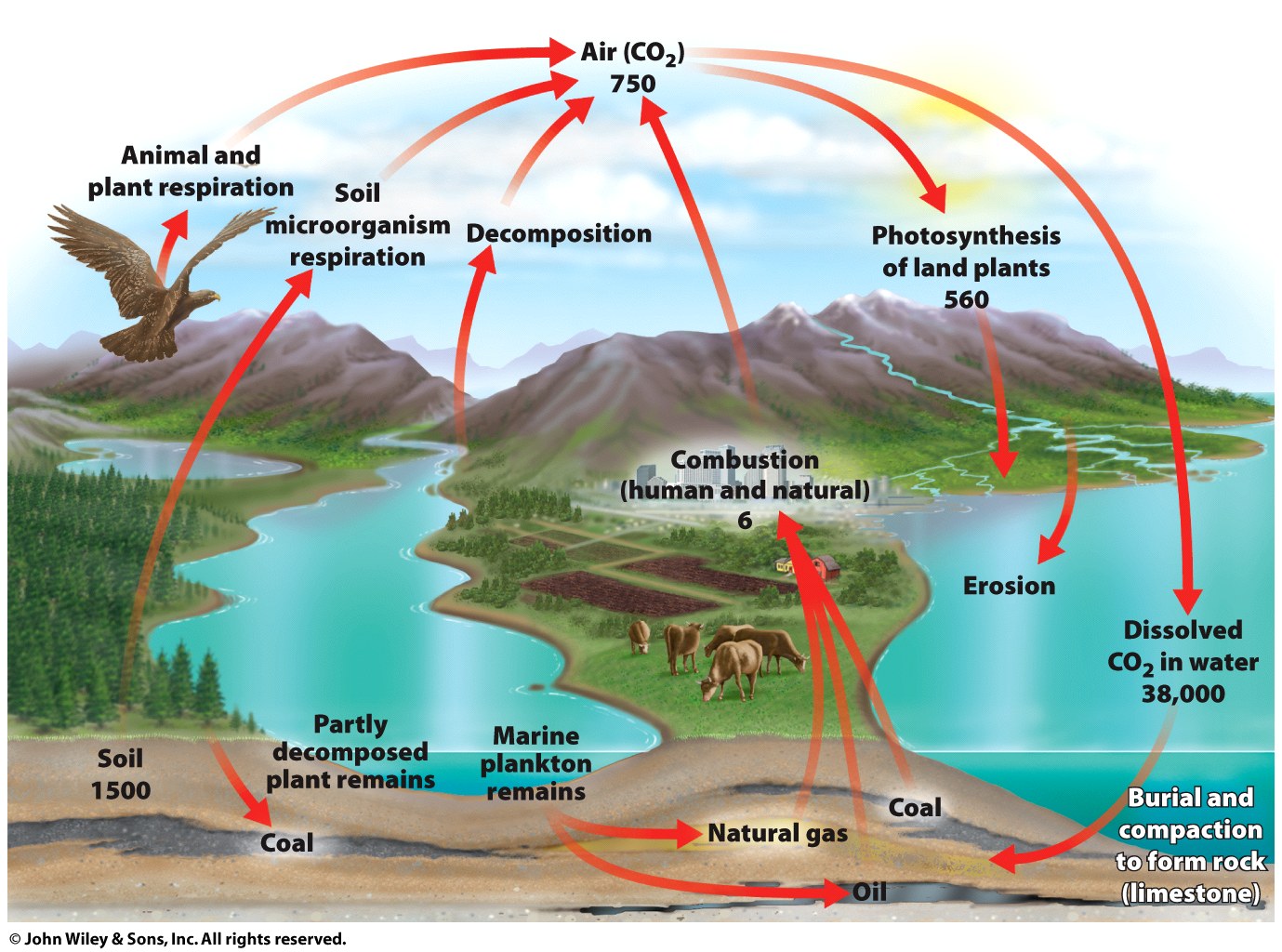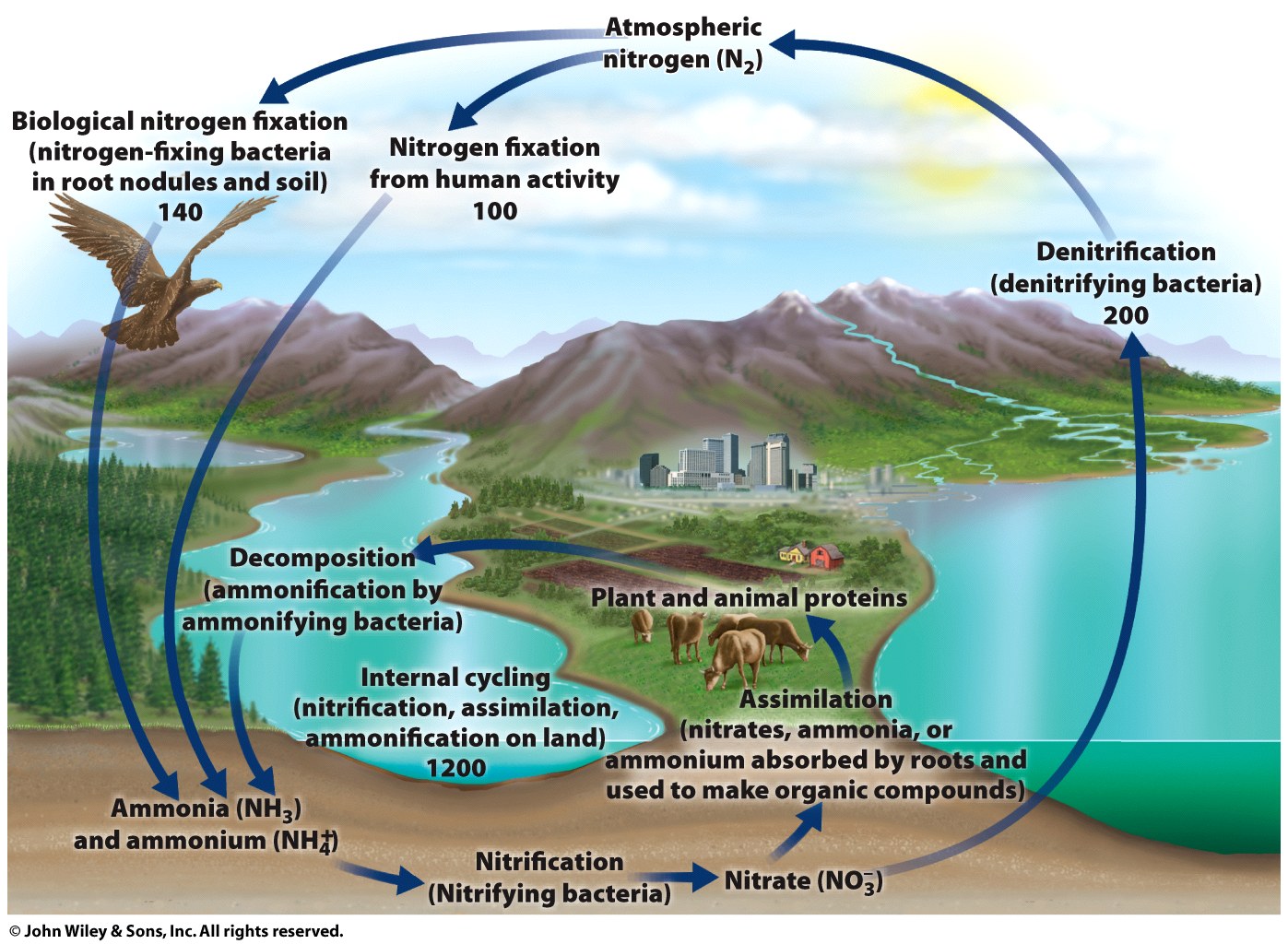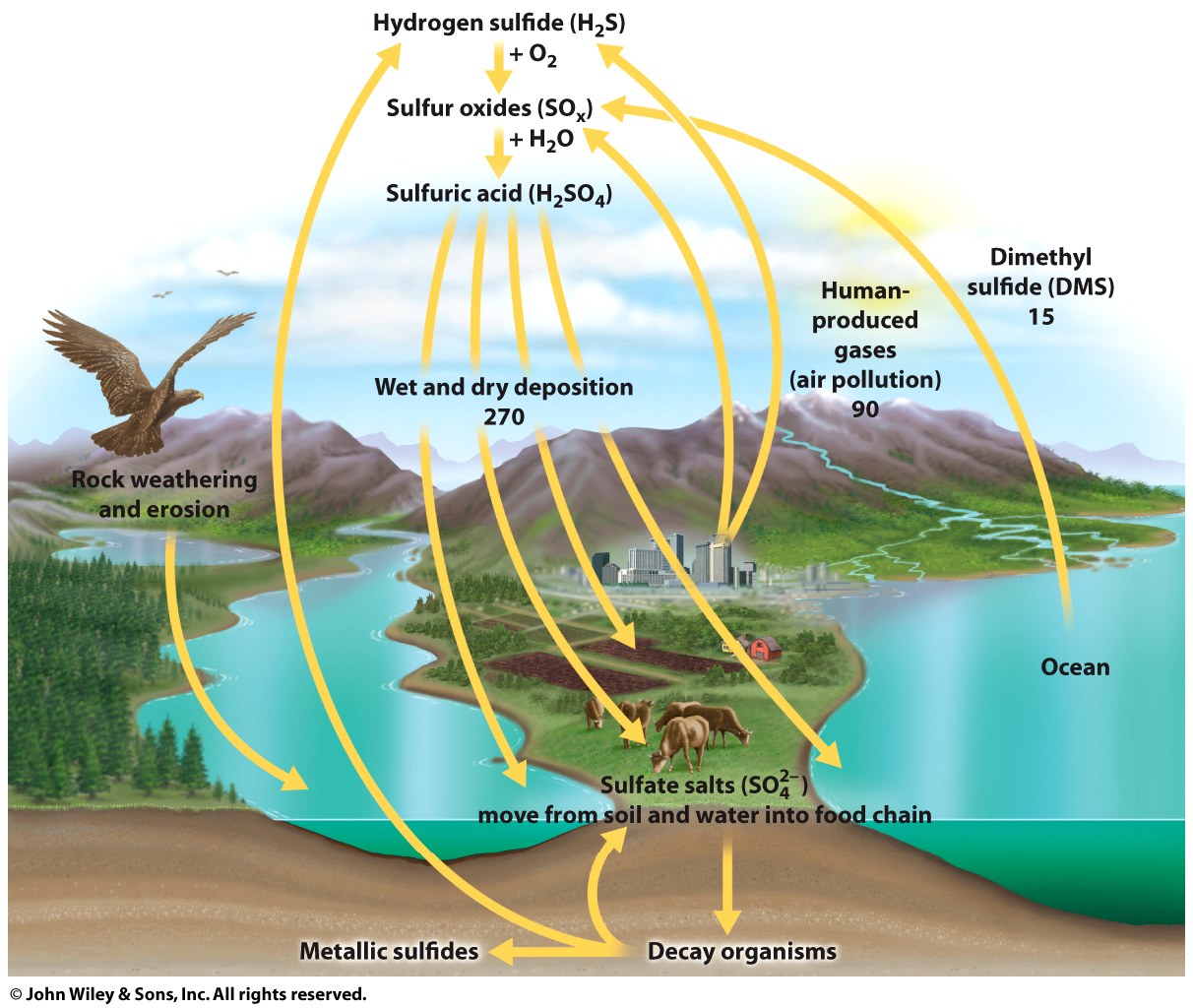Material cycles through the biosphere
Recall...
The Biosphere is thermodynamically open but materially closed.
Modeling biogeochemical cycles
- Definition of system and subsystem boundaries (reservoirs and compartments)
- Prediction and evaluation of transport paths
- Evaluation of fluxes
- Mathematical modeling
See Mackenzie (1998)
Five major cycles
- Carbon
- Nitrogen
- Phosphorus
- Sulfur
- Water
Carbon cycle
Photosynthesis and respiration are part of the carbon cycle.
Anthropogenic changes to the carbon cycle
- Carbon concentration expected to reach double preindustrial levels by middle of twenty-first century
- Primary source of carbon increase is the combustion of fossil fuels (coal, oil, natural gas)
- Carbon increase believed to be a primary driver of anthropogenic climate change
Nitrogen cycle
Nitrogen is abundant in the atmosphere, but requires nitrogen fixation to be used in the Biosphere.
Anthropogenic changes to the nitrogen cycle
- Doubled the quantity of fixed nitrogen entering the global cycle
- Reduces species richness of terrestrial ecosystems
- Carried by runoff into lakes, streams, ocean where stimulates production of biomass whose decomposition creates anoxic ``dead zones''
- Poisons groundwater
- Combustion of fossil fuels also produces nitrogen oxides, which produce photochemical smog and acidic precipitation
Phosphorus cycle
Phosphorus does not combine with other elements as a gas, and rarely enters the atmosphere.
Anthropogenic changes to the phosphorus cycle
- Accelerating loss of phosphorus from land to hydrosphere
- Leads to water quality problems and is effectively lost from terrestrial phosphorus cycle
Sulfur cycle
Most sulfur is found in sedimentary rocks and minerals, where it is released by erosion.
Anthropogenic changes to the sulfur cycle
- Coal combustion releases significant quantities of sulfur into atmosphere
- Leads to acidic precipitation
- Generates human-health hazards
Water (hydrologic) cycle
Water is a basic requirement for all life, and comprises much of the mass of most organisms.
Anthropogenic changes to the water cycle
- Production of aerosols leads to the formation of clouds that do not produce precipitation
- Climate change could significantly alter hydrologic cycle
- Alter precipitation patterns
- Ice melting could alter marine salinity
- Warmer air holds more water vapor, which traps significant amounts of heat, causing even warmer air temperatures (positive feedback loop)
Brian M Napoletano
2011-10-05
